Biden’s New Energy Plan Is Terrible
On Tuesday, July 14, 2020, presumptive Democratic candidate Joe Biden released his updated plan for energy, which calls for expanding renewable energy mandates to meet a 100 percent carbon-free electric grid by 2035, spending billions of dollars on wind turbines, solar panels, and battery storage, an ill-conceived plan to make the entire fleet of school buses electric, a dedication to money-losing energy efficiency projects, subsidizing electric vehicles (EVs), and using taxpayer dollars to build EV charging stations.
A child’s Christmas list to Santa Claus is more realistic than this plan, but it is necessary for us to take a look at the enormous costs and immeasurably small benefits that would accrue from these policies.
What’s the Point?
Any time a politician says they are going to be spending your money, you should demand to know what you will get in return, but this isn’t what the Biden campaign has done. If the whole point of this slightly-watered-down Green New Deal is to prevent climate change, then American taxpayers should be told how much global warming this initiative would potentially prevent, and at what cost.
This information was omitted is because his policy plan would have enormous costs for no measurable benefits.
Unfathomable Costs, Immeasurably Small Benefits
Biden’s energy plan calls for spending $2 trillion in his first term, but it is crucial to remember that this figure only accounts for what the federal government would be spending on these programs. The $2 trillion figure does not account for the additional trillions of dollars American families and businesses would be forced to pay for their energy under these policies, which will make $2 trillion look like a bargain.
Despite an enormous price tag, the policies will have no measurable impact on global warming.
According to climate scientist Pat Michaels, even if the United States were wiped off the face of the planet tomorrow, it would only avert 0.052°C by 2050 and 0.137°C by 2100, which is an amount so small that it is not even scientifically detectable.
Your Green New Electric Bill Is Out of This World
Biden’s plan claims it will “achieve carbon-pollution free energy in electricity generation by 2035.” To accomplish this, “Biden will scale up best practices from state-level clean energy standards.” As we’ve seen here in Minnesota, renewable energy mandates have caused our electricity prices to increase nearly 30 percent faster than the national average. Rather than scaling up these mandates, this should be an example of what not to do.
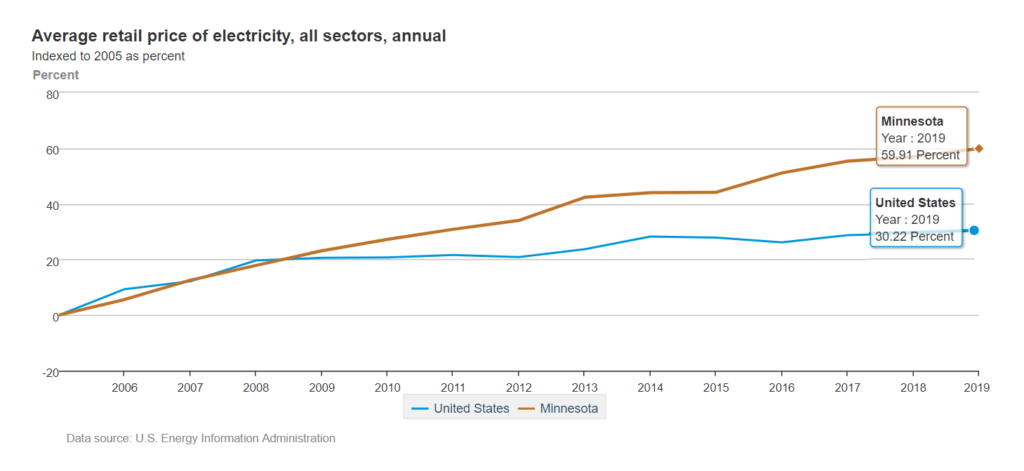
Impossibly Expensive Batteries, Anyone?
Another key focus of Biden’s plan is to invest in battery storage. But as we have discussed in the past, battery storage is an impossibly expensive fantasy. A slide created by Xcel Energy for the Midwestern Governors Association shows that electricity prices would exponentially increase the cost of electricity in the United States if the grid were to be powered by only wind turbines, solar panels, and battery storage.
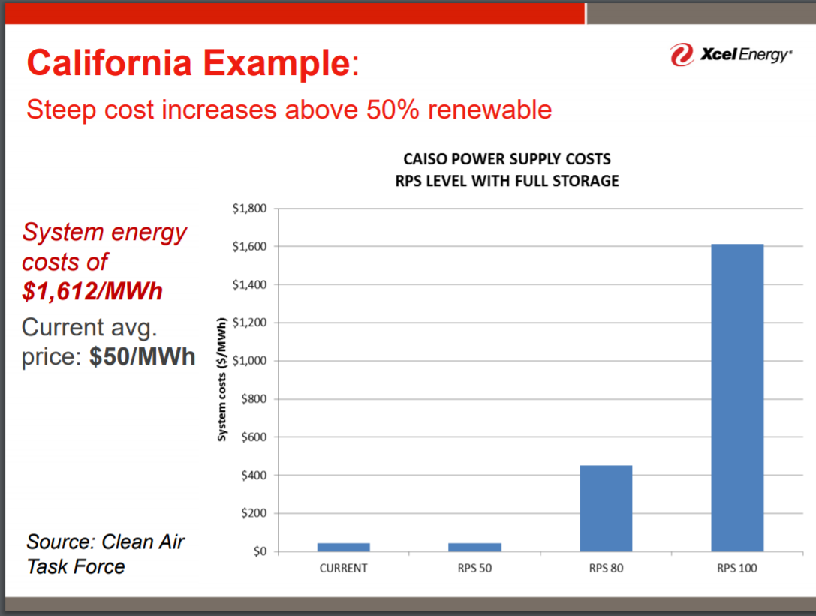
If America were to try and use these three technologies to provide 100 percent of our electricity, the nation’s annual electric bill would grow from about $397 billion in 2019, to $6.6 trillion dollars every single year, an annual increase of $6.2 trillion.
This is the equivalent of every man, woman, and child in the country paying an additional $19,000 per year for their electricity, and it is important to remember that these are low end estimates, because they don’t account for the cost of transmission lines, distribution systems, or other costs that are associated with retail electricity rates.

A Lonely Nod To Sanity
In what is perhaps the one nod to sanity in Biden’s plan: it does not call for the elimination of existing nuclear power plants and it allows the United States to “leverage” existing hydroelectric resources into the future.
While this is good news and could avert some of the highest costs involved with a grid powered by 100 percent wind, solar, and battery storage, the plight of nuclear power could be greatly harmed by adding millions of solar panels and tens of thousands of wind turbines to the system because adding these sources of energy will increase the odds that power prices will turn negative, eroding the economics of nuclear plants.
The map below was produced by the Department of Energy’s Lawrence Berkeley Labs (LBL) and it shows the prevalence of negative prices on the electric grid. According to LBL:
“…Growth in wind and solar had a more consequential impact on prices in some locations and in altering how prices change based on the hour of the day and season. Specifically, growth in wind and solar impacted time-of-day and seasonal pricing patterns, growth in the frequency of negative prices was correlated geographically with deployment of wind and solar (Figure ES-2), and negative prices in high-wind and high-solar regions occurred most frequently in hours with high wind and solar output.”
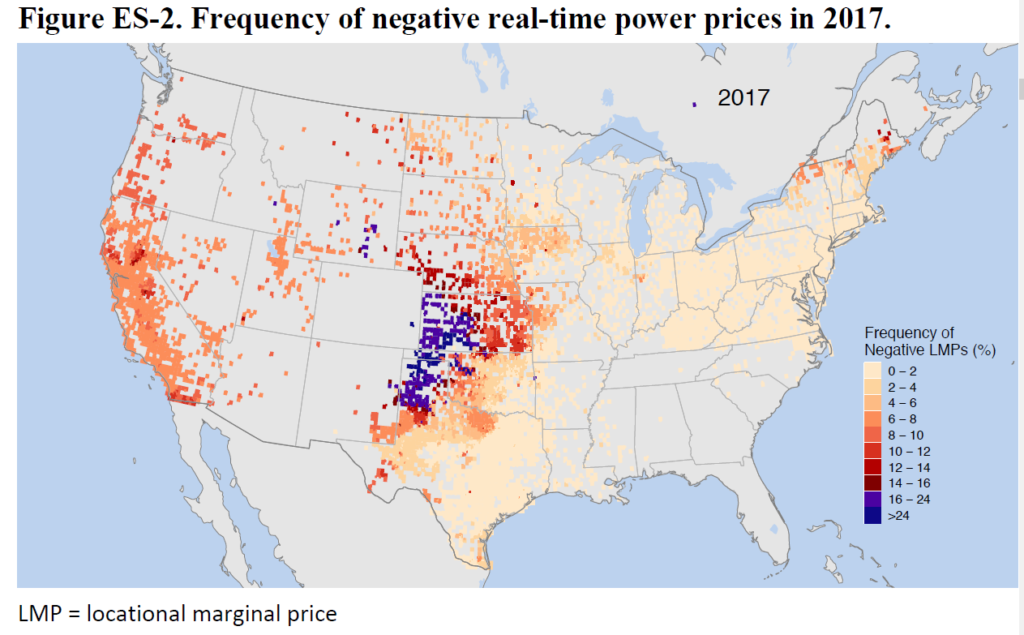
Negative prices hurt coal and nuclear plants the most because these technologies are not able to quickly increase or decrease their electricity output to adapt to price changes. As a result, coal and nuclear plants are increasingly put in positions where they are selling electricity at a loss on the market because they are unable to reduce their electricity output when high wind and solar output force prices into the red.
Unlike other sources of electricity, wind facilities are able to keep selling electricity at negative prices because they are subsidized by the federal government. In fact, a wind producer can sell electricity at up to -$23 per megawatt hour (MWh) and still make money. In contrast, a coal or nuclear plant would be losing $23 per MWh.
Greatly increasing the amount of wind and solar on the grid, which is what Biden clearly wants to do, will ultimately undermine the ability of coal and nuclear plants to remain in business long term. The result is a grid like California’s, which is heavy on wind and solar during the day, but dependent upon natural gas and electricity imports from saner states (that use a combination of coal, natural gas, and nuclear power to produce their power) to keep the lights on.
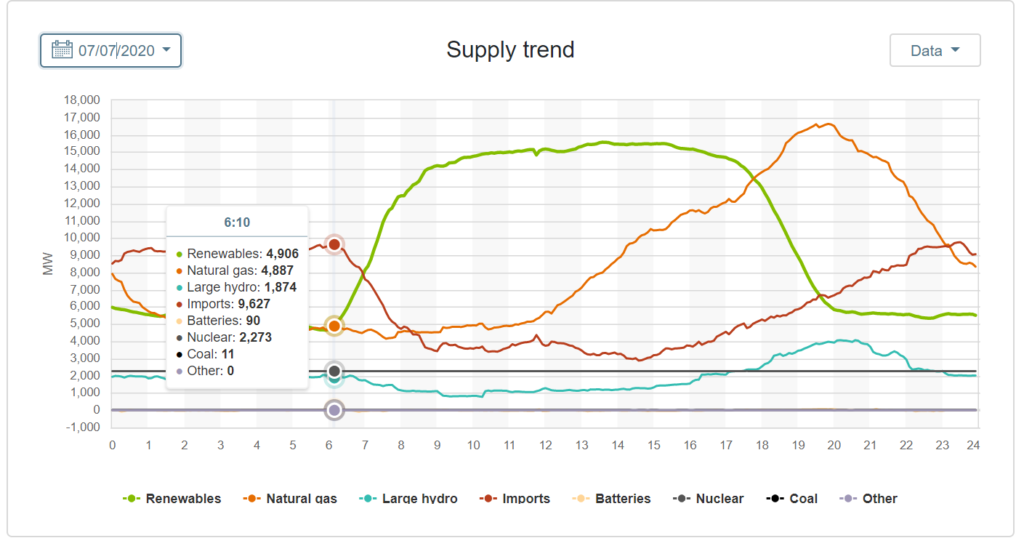
What About The Rest of Our Energy?
The costs discussed above are incomplete because they are just a rough estimate of what it would cost to replace the electricity we currently generate with a mixture of technologies including coal, natural gas, nuclear, hydro, and other renewables with a combination of wind, solar, and battery storage. The estimates above do not even begin to contemplate the enormous amount of energy the United States consumes in the form of oil for transportation, and natural gas for home heating.
This is significant, because according to EIA, oil accounted for 37 percent of all the energy consumed in the United States in 2019, and natural gas accounted for 32 percent. If we were to make a rough estimate of what it would cost to completely electrify these energy sources, the nation’s energy bill would be roughly $10.6 trillion per year, or $32,000 per man, woman, and child.
This is half of the country’s gross domestic product.

These are massive costs for zero measurable environmental benefits.
Subsidizing Electric Vehicles and Charging Stations
Biden’s plan also call for subsidizing electric vehicles (EVs) and building 500,000 EV charging stations. As we have documented many times before, these types of subsidies primarily benefit white, wealthy, liberals, and raise the cost of driving for everyone else. According to EIA, 67 percent of EV owners make more than $100,000 per year, and only 3 percent of those earning less than $25,000 own an EV.
This means EV subsidies are a wealth transfer from low-income families to the wealthy.
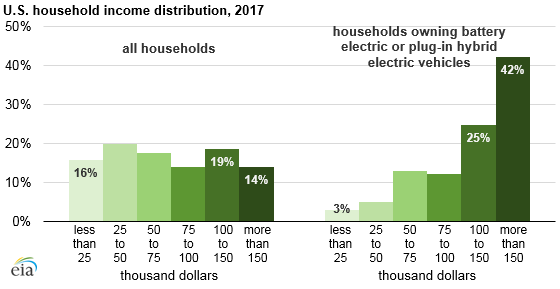
EV chargers are also very expensive, with the fastest chargers costing $50,000 per charger. Contrast this with replacing a gasoline pump, which costs $260 to $1,000 per unit. This means Biden wants to spend $25 billion on a project that likely won’t even replace the number of gasoline pumps we already have in existence today.
Conclusion
Biden’s plan is the epitome of the broken window fallacy. It is based on the idea that we can grow the economy by destroying it and rebuilding it over and over again. This does not bring about prosperity for anyone; just ask the Minneapolis City Council if they think the arson and destruction of businesses will be a “stimulus” for the City’s economy.